Pandemic gardens and mental health / Les jardins de pandémie et la santé mentale
EN: "Pandemic gardens and mental health" is a series of digital colour environmental portraits exploring the relationship between mental health and the Covid-19 pandemic through the positive impacts of gardening. The first chapter of this project was made in Tiohtià:ke (Montréal, Canada) on the traditional territory of the Kanien’kehà:ka. This urban space was highly impacted by the first wave of the Covid-19 pandemic, and strict social distancing measures were implemented early on. "Pandemic gardens and mental health" was born out of this situation and depicts individuals participating in the regenerative activity of gardening as a way to combat the negative mental health impacts of social distancing. The work is made up of digital photographs, taken in a variety of settings including balconies, backyards and community gardens. In collaboration with each person, photos were made moving around the garden space as each person transplanted, watered, pruned, or harvested plants.
Amidst social isolation and a worldwide pandemic, gardens offer an integral space for self-management of mental health. Periods of time working in a garden relieves anxiety, opens space for meditation, provides key nervous system regulation, and brings a sense of wonder in the natural world. Gardens also empower on a broader socio-political level by giving individuals a sense of control over the food system. Time of day was an important consideration in the planning of each portrait session, and each photo was made during the time of day the person spends the most time in their garden. For some, early morning time spent in their gardens provides a quiet and calm space to start the day before loud industrial noise and gentrifying construction disrupt their sense of peace; for others, their gardens offer a relaxing and nourishing space to spend time at the end of long days spent working from home. Another important element of gardening is that it is accessible to a wide range of people with whatever space they have, as shown with the range of garden sizes present in this project; working in large community gardens allow people an escape from their tiny apartments.
Here you can see more images and stories from Part One with Hashmita, Part Two with Leh, Part Three with Kristen, Part Four with Flavie, and Part Five with Élise of this environmental portraits project.
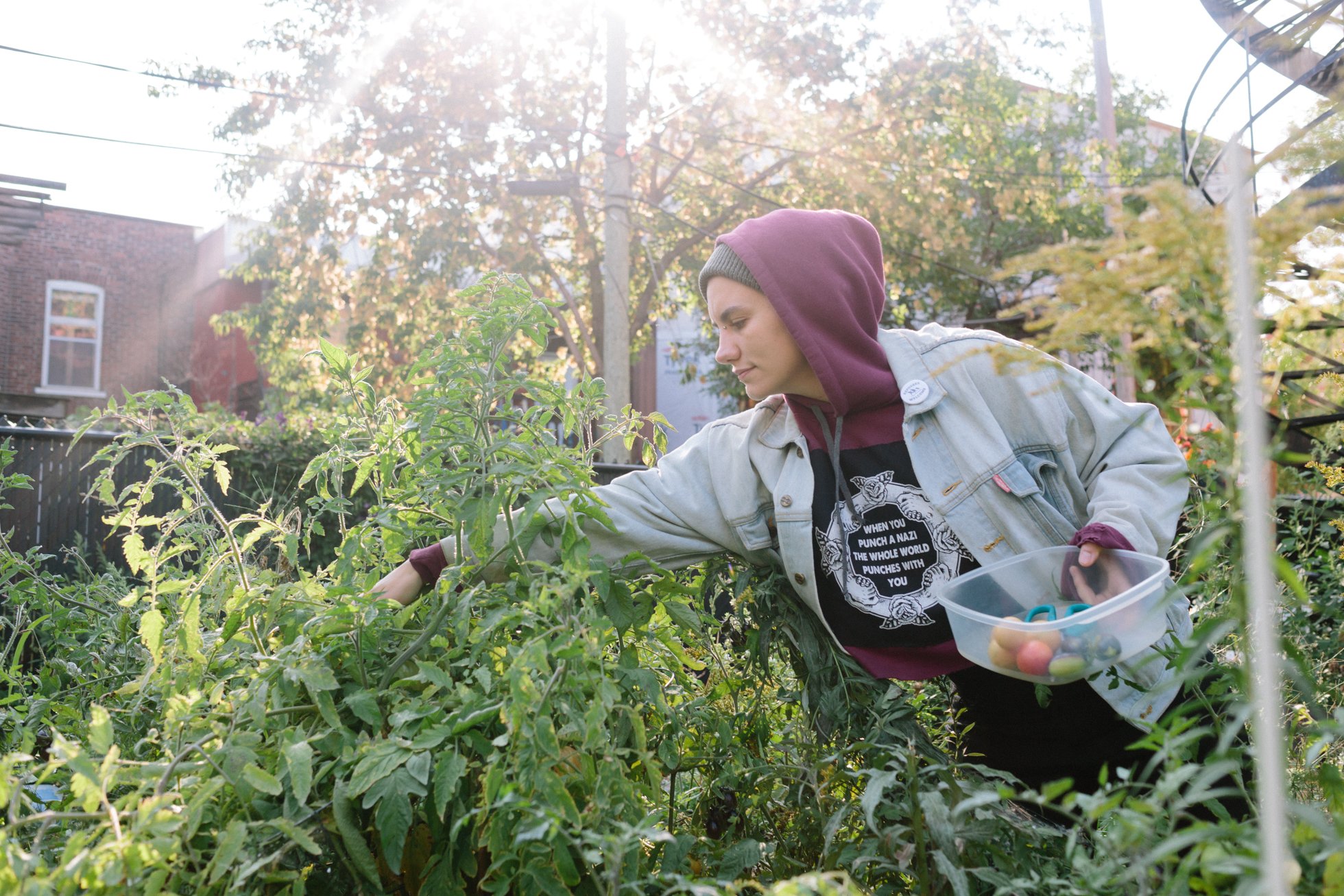

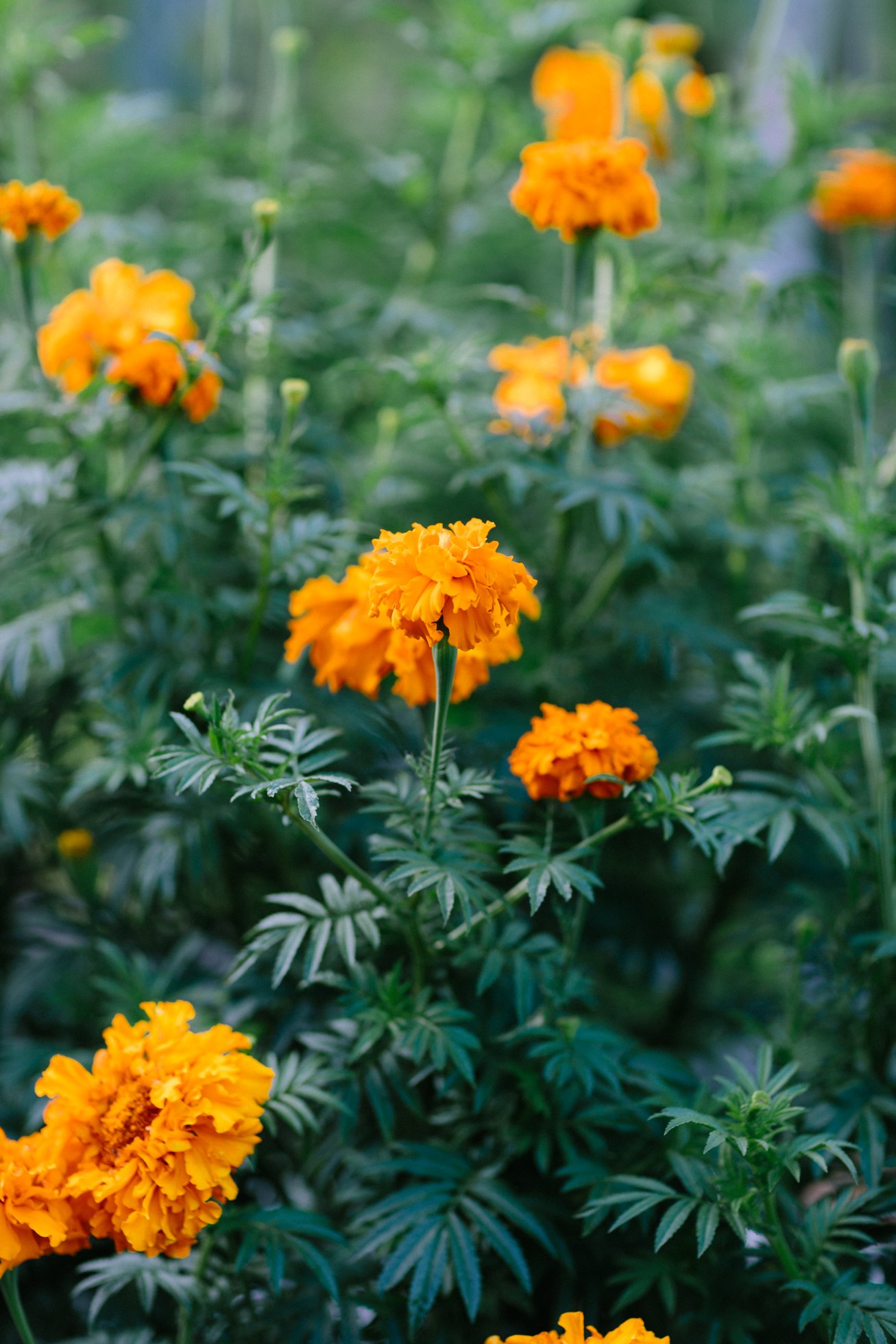
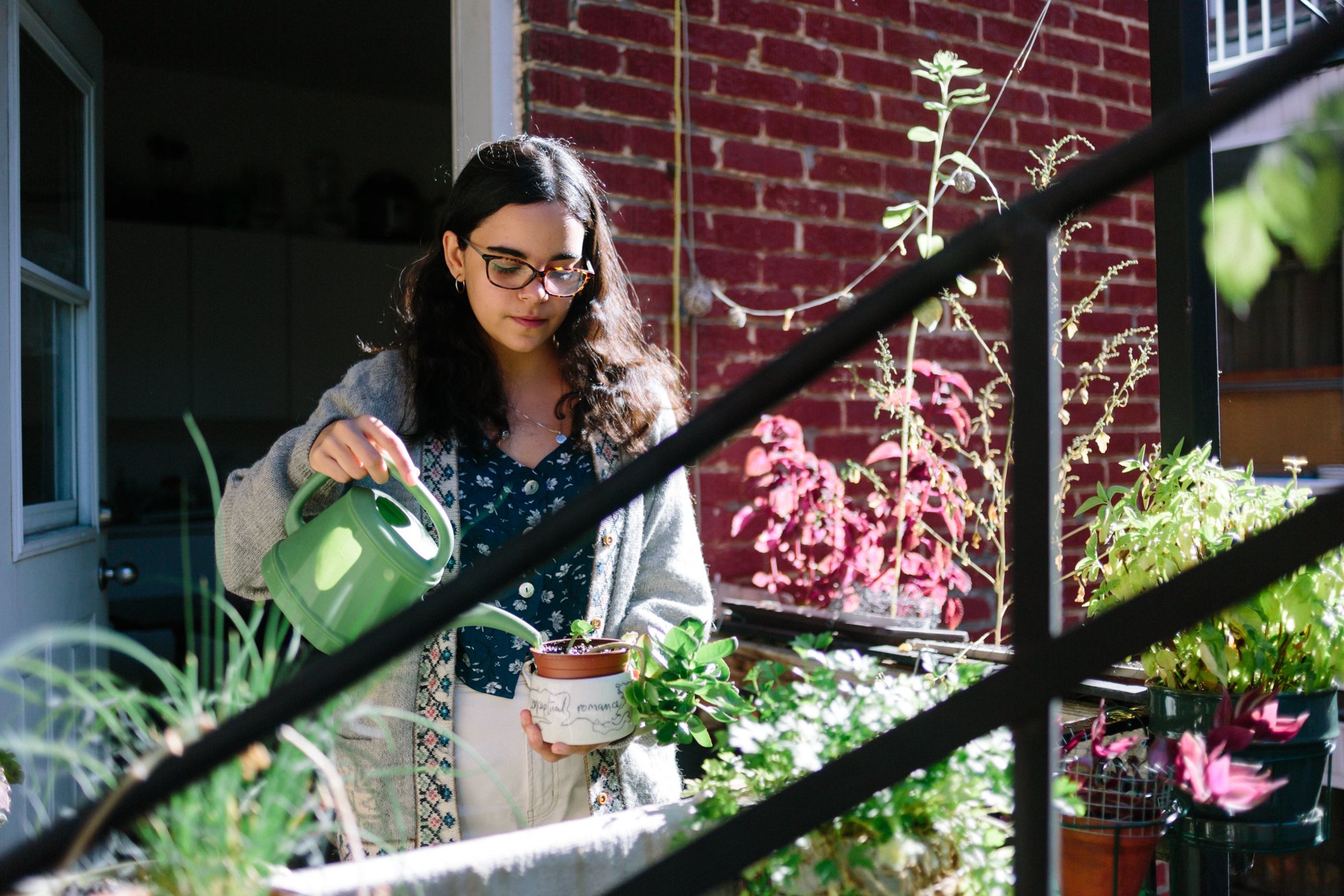
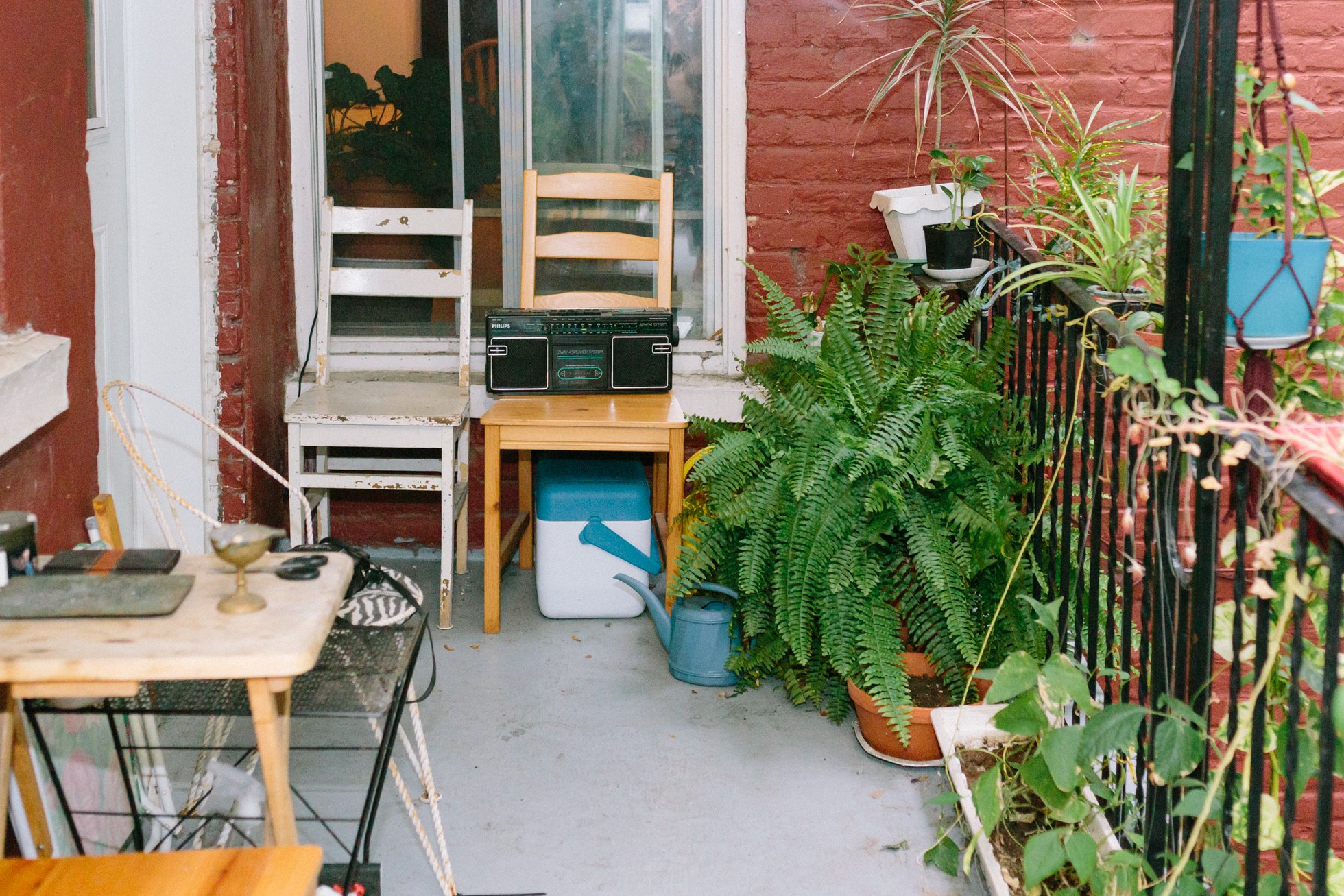
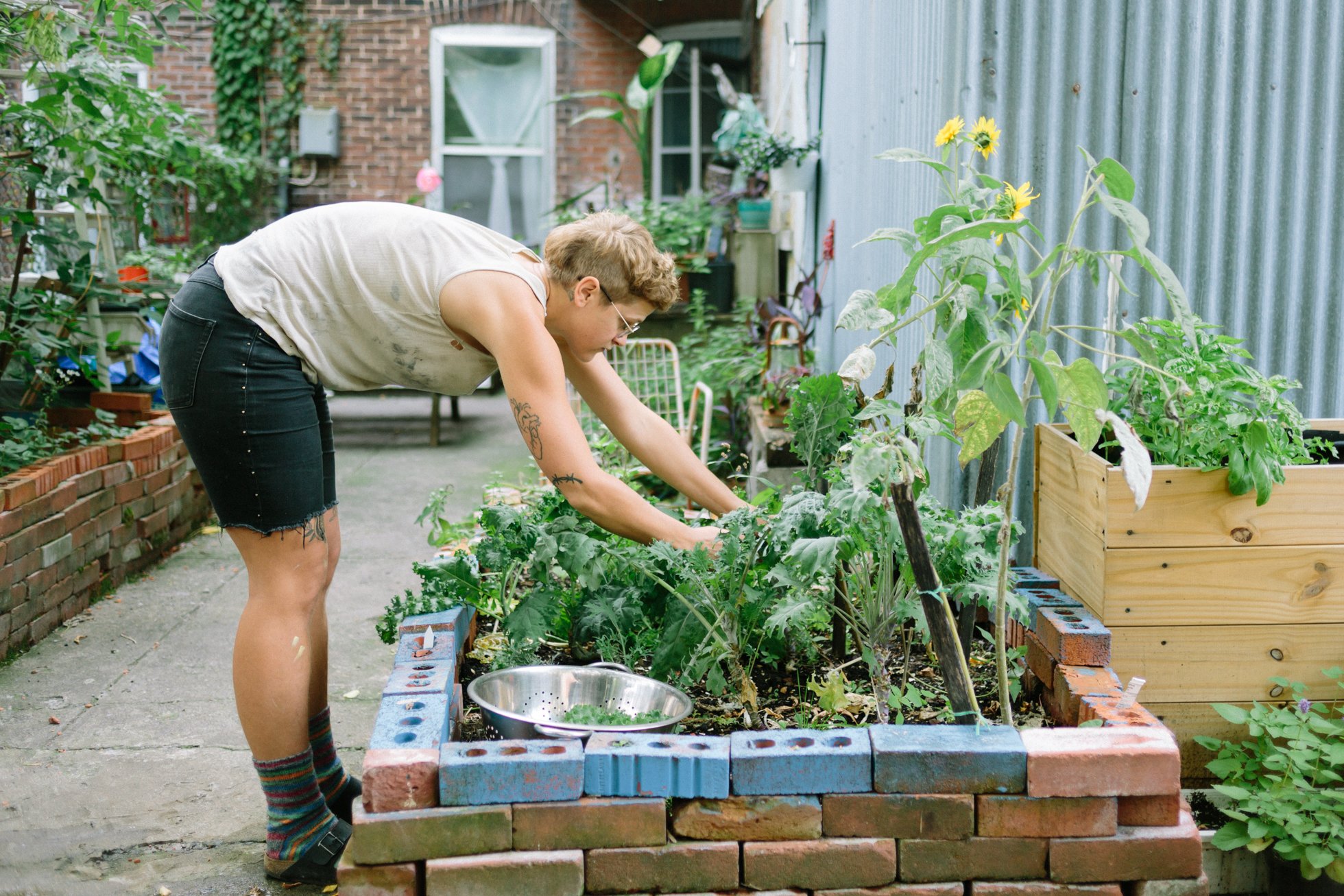
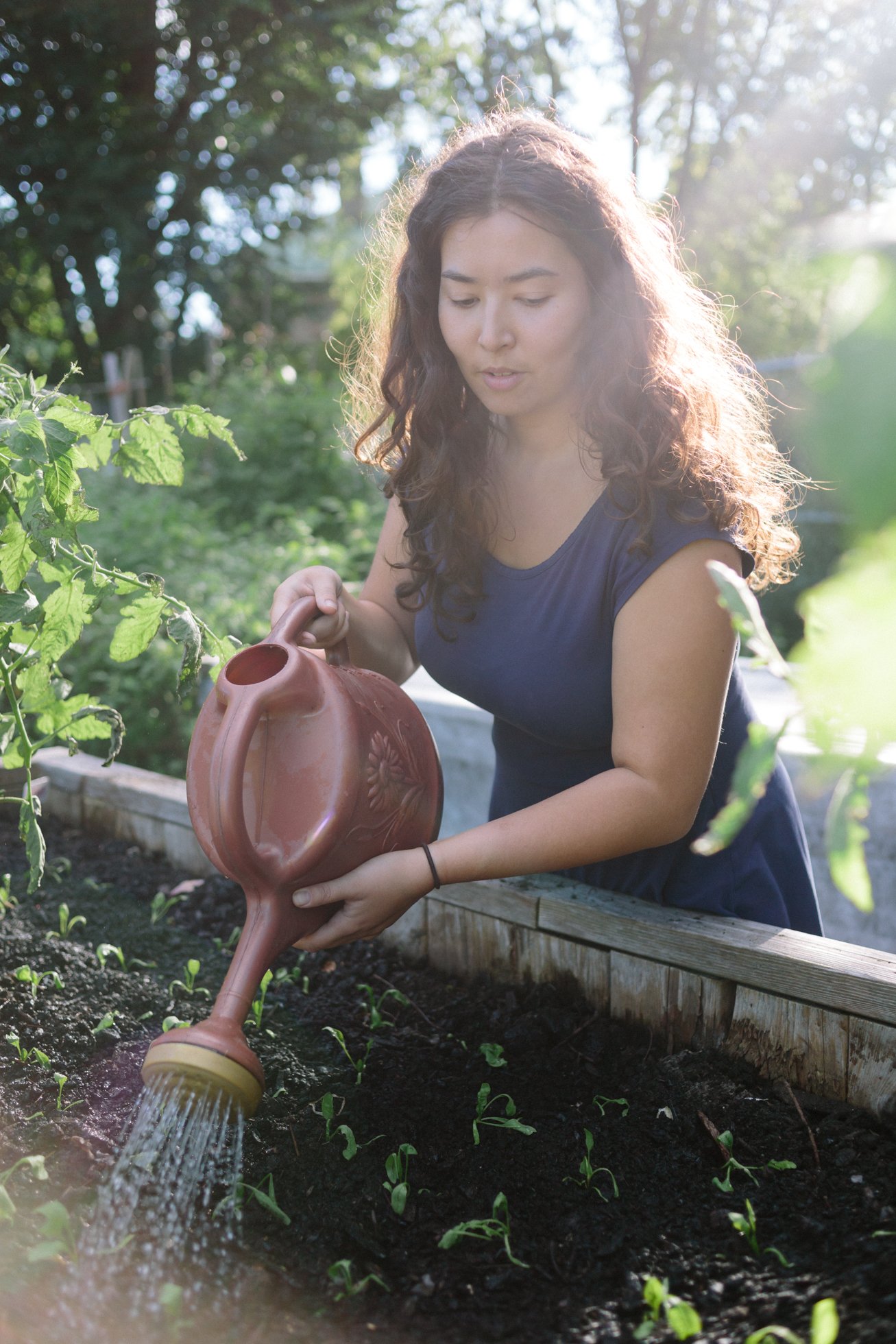
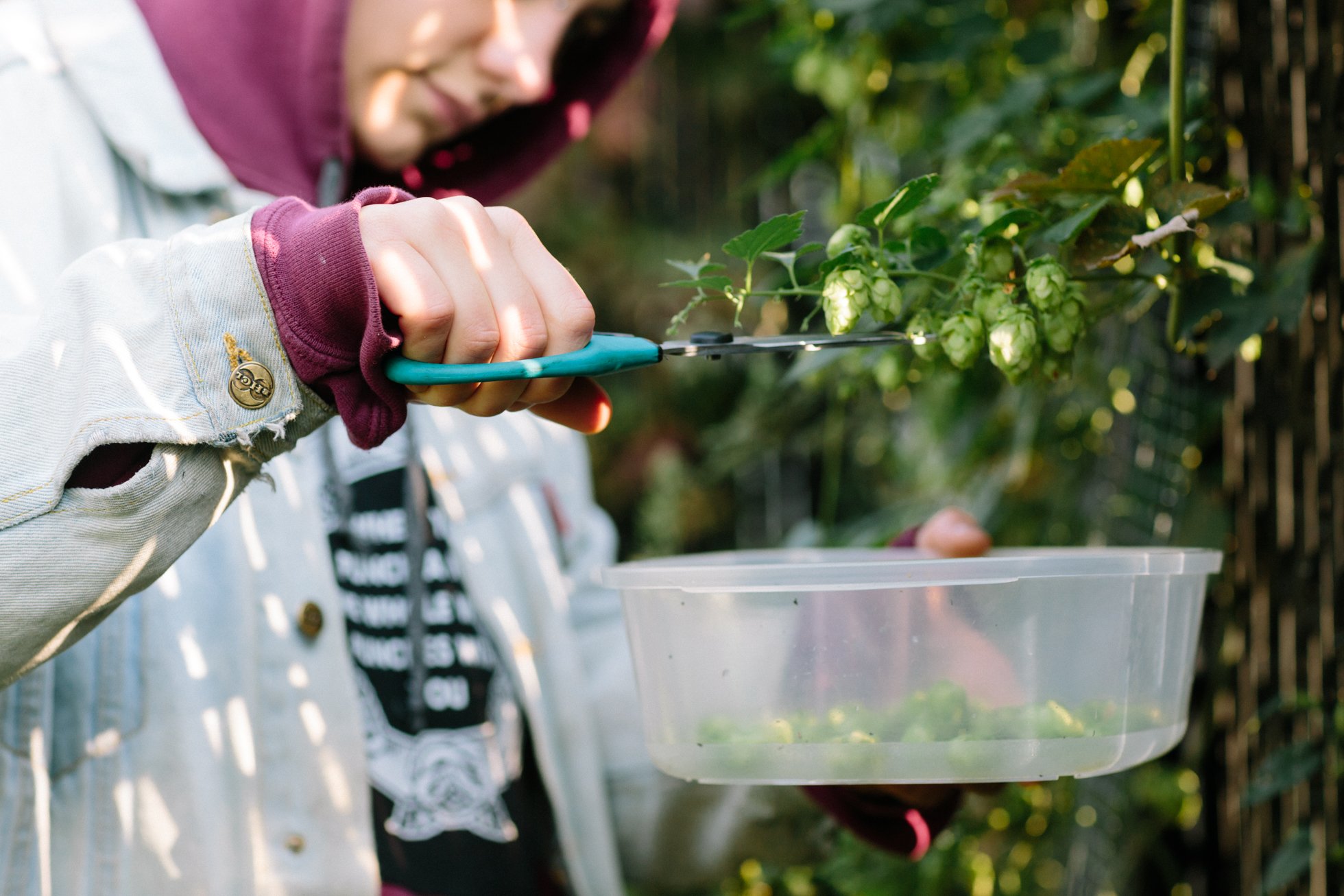
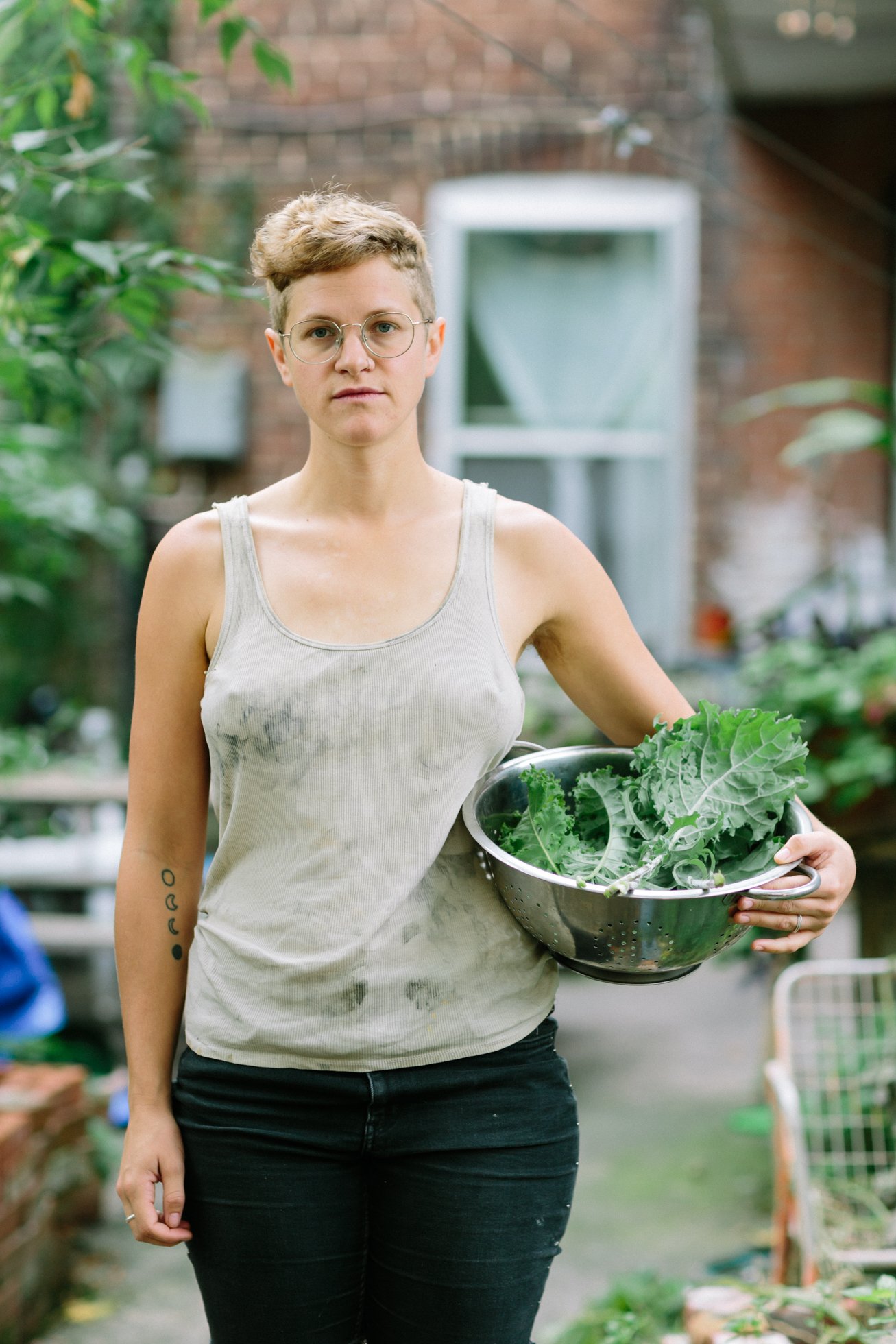
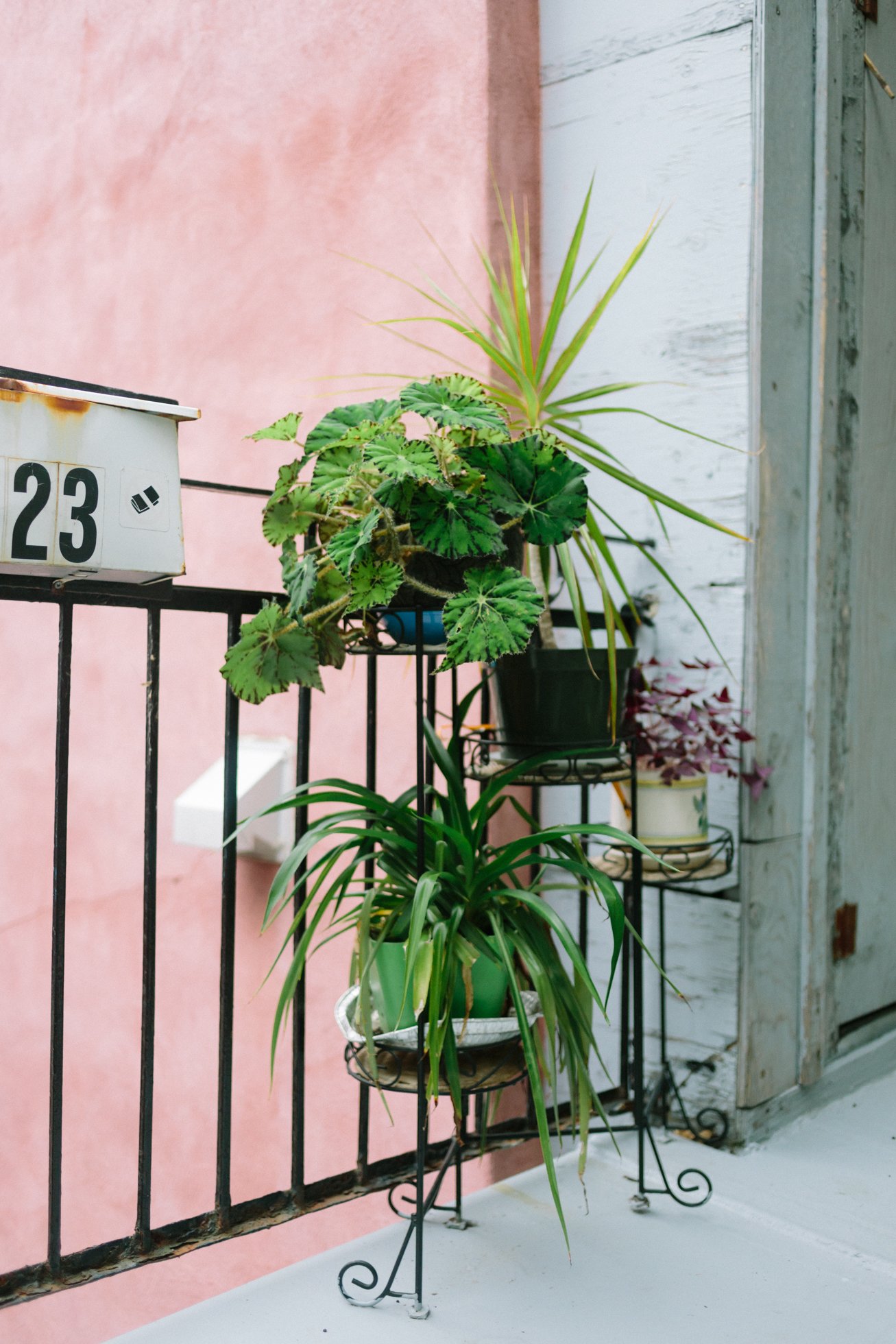
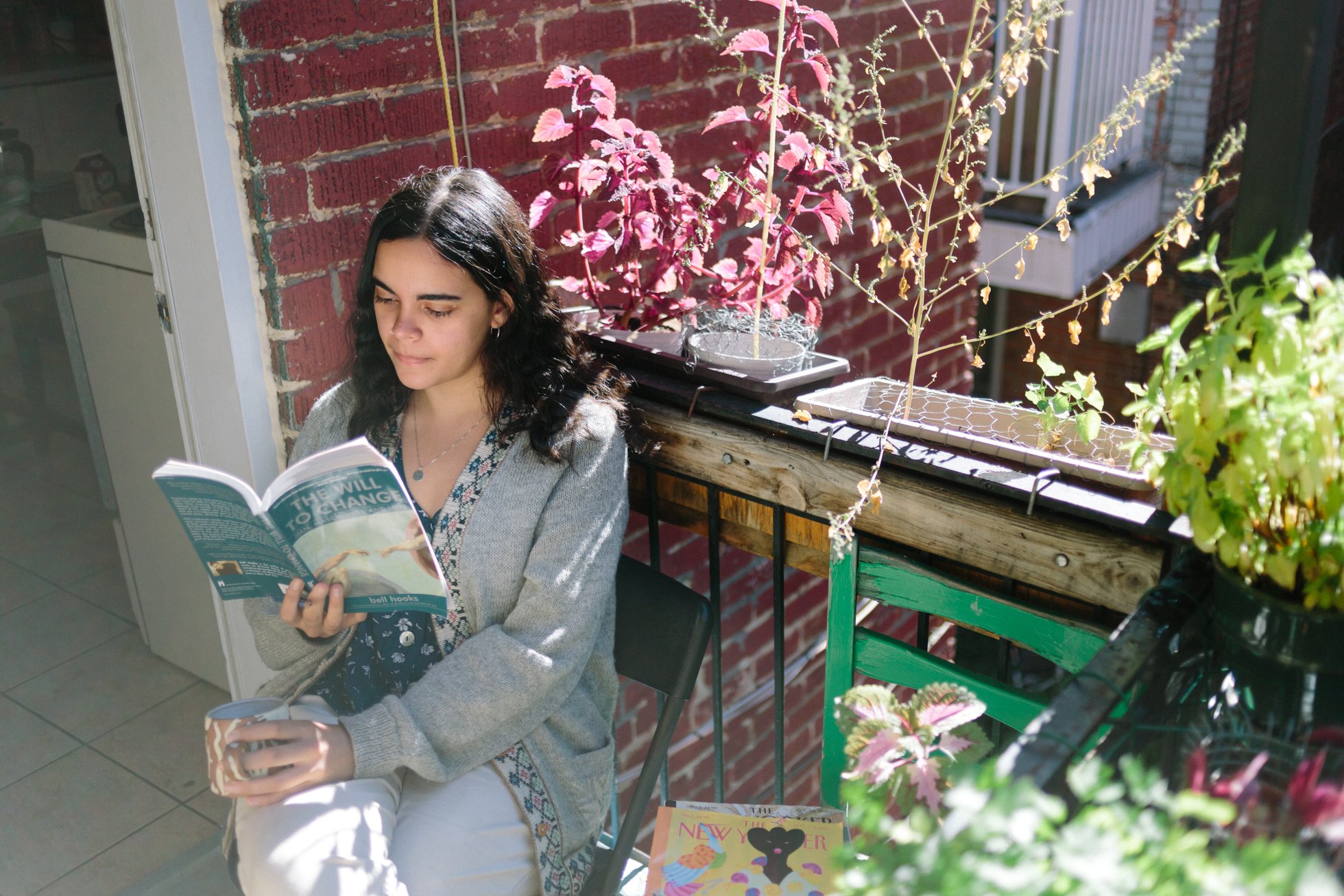
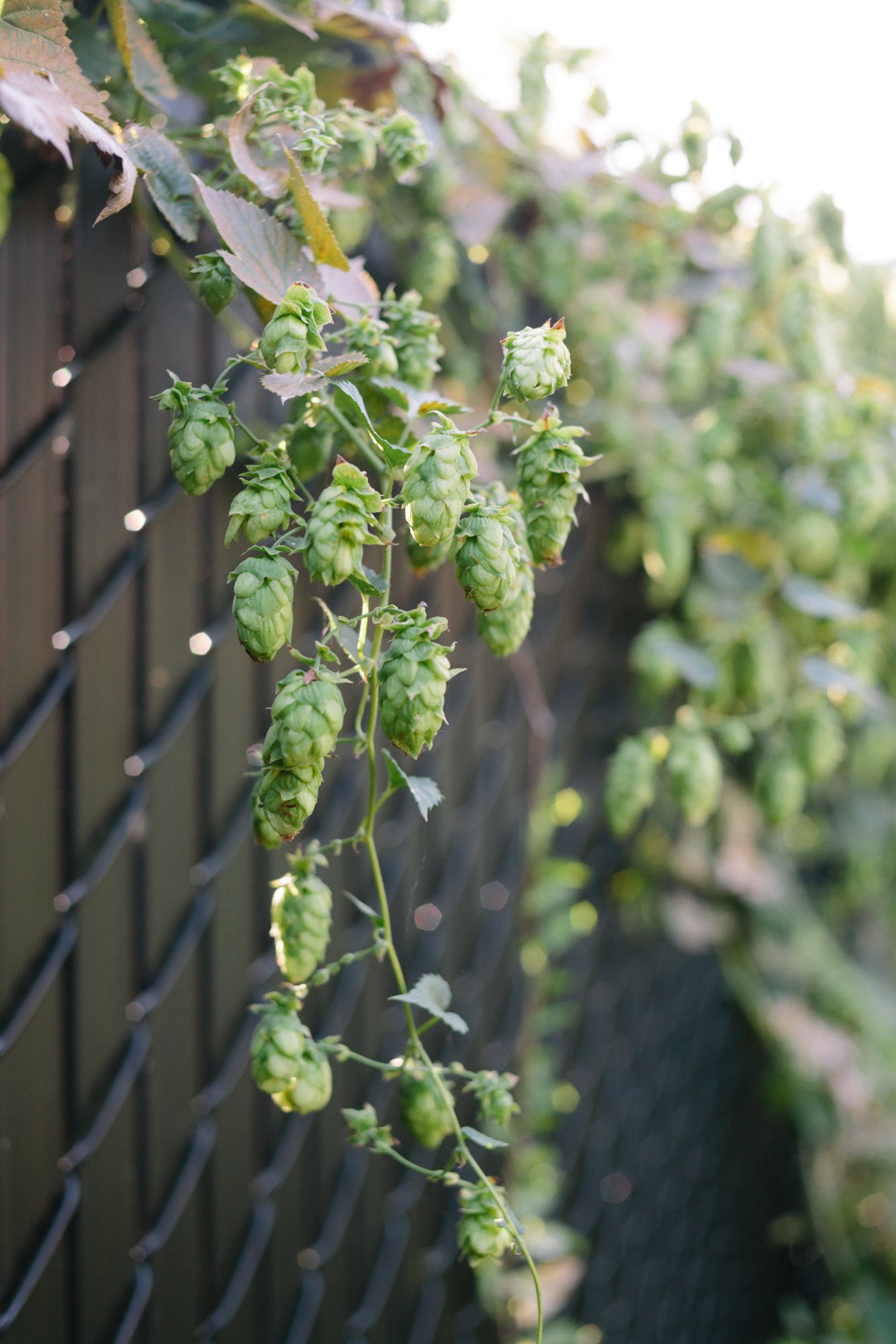
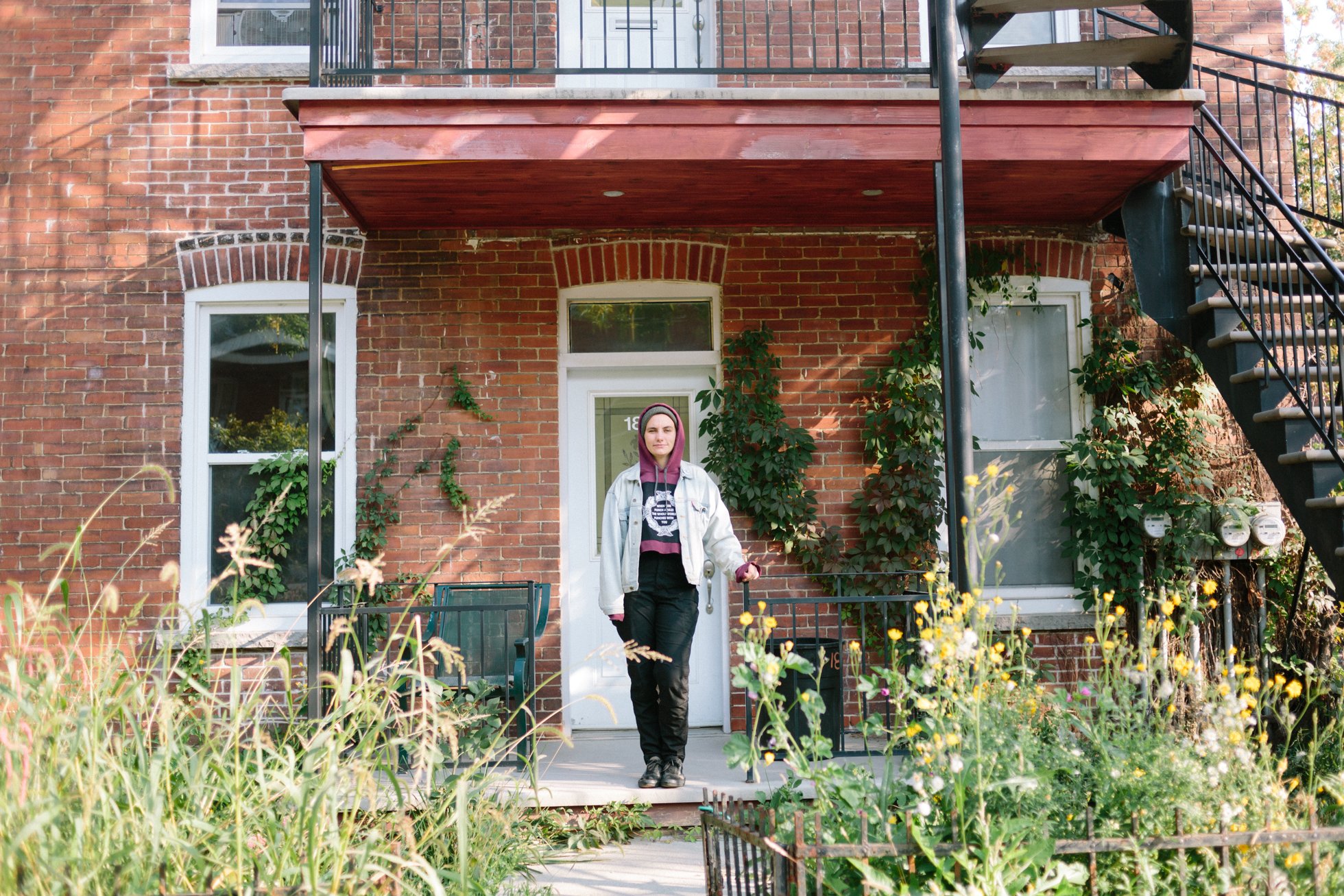
FR: Les jardins de pandémie et la santé mentale est une série de portraits environnementaux produits à Tiohtià:ke (Montréal, Canada) sur le territoire traditionnel de la nation Kanien’kehà:ka où j’habite. Cet espace urbain a été très touché par la première vague de la pandémie COVID-19, et des mesures strictes de distanciation sociale avaient été mises en place presque immédiatement. Les jardins de pandémie et la santé mentale est née dans ce contexte, montrant des personnes qui prennent part à l’activité régénératrice du jardinage pour combattre les effets négatifs de la distanciation sur la santé mentale. L'œuvre comporte quinze photographies, prises dans des milieux variés, tels que sur un balcon, dans une cour, et dans un jardin communautaire, entres autres. J’ai suivi chaque personne tandis qu’elle transplantait, arrosait, émondait, ou plantait.
Au temps d’une pandémie globale et d’isolement social, les jardins offrent un espace de répit où l’on peut s’occuper de sa santé mentale. Travailler son jardin fait fondre l’anxiété, rend possible la méditation, aide à régulariser son système nerveux, et offre un sentiment d’émerveillement face au monde naturel. Au niveau sociopolitique, les jardins contribuent également à un sens de prise de pouvoir sur ses moyens de subsistance. Un élément important lorsque je planifiais chaque session photo était de penser au temps de la journée choisi, chaque photographie étant prise au moment où l’individu passait le plus de temps dans son jardin. Pour certain.e.s, tôt le matin était le moment idéal pour jardiner, offrant un peu de calme et de tranquillité avant d’entamer la journée; avant l’arrivée des sons de construction gentrifiante et d’industrialisation. Pour d’autres, le jardin était l’endroit de prédilection pour se détendre et se ressourcer à la fin d’une longue journée passée au télétravail. C’est remarquable à quel point le jardinage est accessible à un grand nombre de personnes peu importe l’espace disponible: tel qu’illustré dans ce projet, les jardins peuvent être de toutes les tailles. Travailler dans les jardins communautaires permet d’autant plus de s’échapper de son petit appartement.
Ici vous pouvez voir plus d’images et histoires de cette séries de portraits environnementaux : Partie Une avec Hashmita, Partie Deux avec Leh, Partie Trois avec Kristen, Partie Quatre avec Flavie et Partie Cinq avec Élise.
